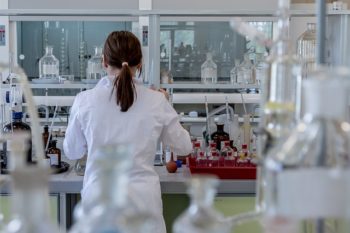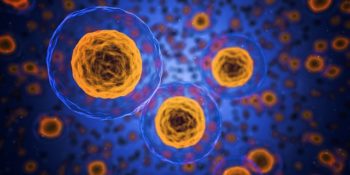 2 NEW STUDIES IN THE FIGHT
2 NEW STUDIES IN THE FIGHT
Welcome to another FACTUAL FRIDAY everyone. October is BREAST CANCER AWARENESS MONTH and we’re starting it off with some good news about this old foe.
Let’s begin by reminding everyone that breast cancer that stays in the breast does not kill. Breast cancer only becomes a potential killer when it spreads outside the breast. Breast cancer only becomes life-threatening when it metastasizes to other parts of the body.
So, in theory if we can keep breast cancer in the breast, we can treat it successfully and ensure survival for the patient.
And, I’m happy to report that this appears to be exactly what some new and exciting research indicates. In fact, there are two new developments in breast cancer research that we’re going to discuss this week.
THE FIRST – LOX
To begin, please know this has nothing to do with smoked salmon. Rather, this refers to an enzyme called LysYI Oxidase, or LOX for short.
As you probably already know, cancer spreads when cancer cells break off the main tumor and enter the surrounding lymph nodes. Then these cells travel through the bloodstream to reach other parts of the body. With breast cancer, these traveling cells find their way to the liver, lungs and in particular, to the bones. In fact, bone metastasis accounts for about 85 percent of metastatic breast cancer patients.
Clearly, when this occurs the battle with breast cancer becomes a true struggle between life and death.
Yet now there is news from the University of Sheffield and the University of Copenhagen that just might change this spread of breast cancer cells to the bones.
Researchers have discovered that the enzyme LOX damages a person’s bones before breast cancer cells reach the bones. It’s released from the primary breast cancer tumor and has the power to create holes in our bones. When the bones are affected in this way, they become weaker and it becomes easier for cancer cells to move in and take hold. This, of course, results in stage 4 metastatic breast cancer, which is the most difficult to treat.
So, when LOX is blocked in an early stage breast cancer, we have a much better chance of preventing the spread of the disease. This research also may lead to more effective drugs that will help prevent and treat cancer-caused bone destruction.
THE SECOND – FAT
Believe it or not, fat may be our new best friend. In additional studies, researchers have found a way to coax human breast cancer cells to transform into fat cells. The discovery is new, but appears to be very promising.
It has to do with our epithelium cells, which happen to be some of the most important cells in the human body. When we cut our finger, for example, it’s the responsibility of the epithelium cells to fix the situation and repair the skin, the blood vessels, the nail or whatever else has to be done.
 To do this, these cells become more fluid, changing their structure and turning into a type of stem cell called a mesenchyme. It’s these mesenchyme cells that then transform into whatever type of cell the body needs at the moment. This process is called epithelial-mesenchymal transition or EMT.
To do this, these cells become more fluid, changing their structure and turning into a type of stem cell called a mesenchyme. It’s these mesenchyme cells that then transform into whatever type of cell the body needs at the moment. This process is called epithelial-mesenchymal transition or EMT.
It’s been known for a while that cancer can use EMT to spread through the body. But now researchers have found specific drugs that take this process of EMT to induce cancer cells to turn into harmless fat cells instead of additional cancer cells — a process is called adipogenesis. Can you imagine the possibility of cancer cells becoming fat cells and nothing more? How great is that!
Of course, the findings of both studies are preliminary and much more research needs to be conducted. Yet, the results are still exciting and so important for all of us who have been diagnosed with breast cancer or will be diagnosed with breast cancer.
A little good news is a great way to start off BREAST CANCER AWARENESS MONTH. We’ll discuss much more over the next few weeks. But until then, thanks again for joining me everyone. Stay in GOOD HEALTH and . . .
TAKE THE COURSE AND TAKE CHARGE!



Leave a Comment